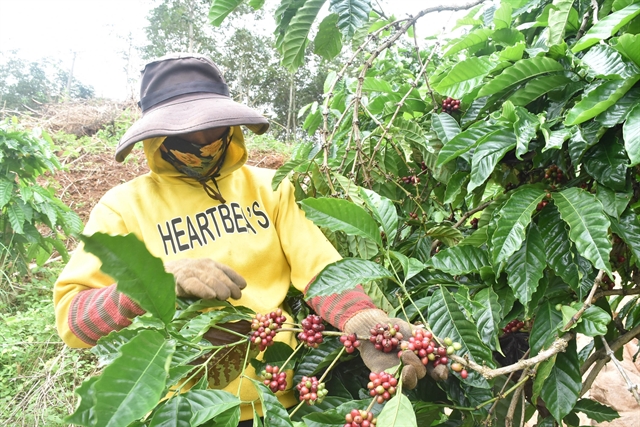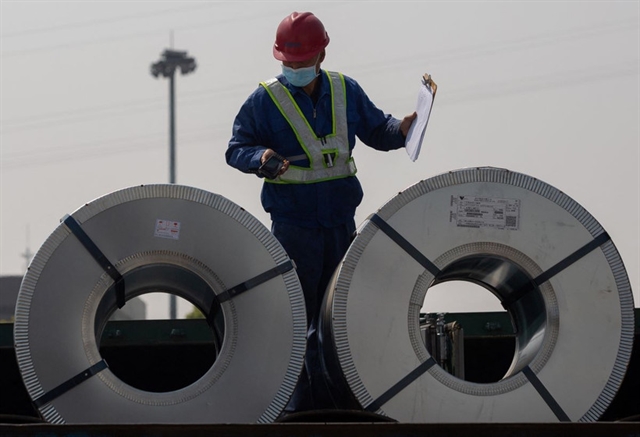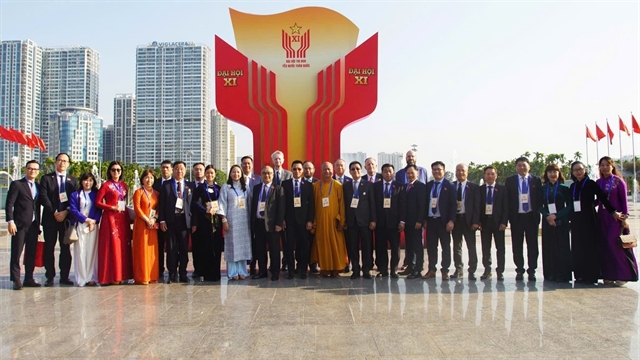 Society
Society

Coffee farmers in Đắk Nông Province’s Đắk Mil District are creating high – quality coffee growing zones by using advanced techniques targeting exports.

|
| Coffee being harvested in Đắk Nông Province’s Đắk Mil District. — VNA/VNS Photo Nguyên Dung |
ĐẮK NÔNG — Coffee farmers in Đắk Nông Province’s Đắk Mil District are creating high-quality coffee growing zones by using advanced techniques targeting exports.
A major coffee growing district in the Tây Nguyên (Central Highlands) province, Đắk Mil has more than 21,000ha under coffee, including more than 1,400ha that comply with the common code for the coffee community (4C), UTZ, Fair Trade, Rainforest, VietGAP, GlobalGAP, or organic standards.
It has ideal weather and soil for growing coffee, and its products have a specific flavour.
Its coffee has been granted the ‘Cà phê Đắk Mil’ (Đắk Mil coffee) brand name by the National Office of Intellectual Property.
Nguyễn Quốc Tráng has a six-hectare farm in the district’s Thuận An Commune where he has been growing coffee to high quality standards for many years. It is expected to yield four to five tonnes per hectare this year, almost 10 per cent higher than last year, he said.
At current coffee prices of VNĐ40,000-41,000 a kilogramme, he expects to earn VNĐ70 million (US$3,000) per hectare, he said.
“To get high-quality coffee, the beans are harvested when 80-90 per cent of them are ripe. They have to be dried properly.”
The Thuận Bằng Agriculture Co-operative in Thuận An Commune has 116 members who grow 300ha of coffee under Fair Trade or UTZ standards.
Nguyễn Hữu Hạ, its director, said farmers had increased the use of bio-fertilisers and reduced the use of chemicals.
“Consumers’ requirements are very high. They drink pure coffee. To have delicious pure coffee, coffee beans have to be ripe when they are harvested.”
The co-operative sells its beans at a high price of VNĐ60,000 a kilogramme.
The commune has developed a 500ha coffee growing area with automatic and semi-automatic drip irrigation facilities and modern facilities for processing beans.
It has a 10-30 per cent higher yield than under traditional farming methods.
In September the province People’s Committee recognised it as a high-tech coffee growing area, the first of its kind.
It has origin traceability, production codes and a brand name, Thuận An coffee.
Trần Khắc Dũng, chairman of the commune People’s Committee, said coffee farmers were instructed to target organic standards and develop the crop into the commune’s speciality product.
“We are going to complete infrastructure for the high-tech coffee growing area and will expand this model to other areas.”
Lê Văn Hoàng, deputy chairman of the Đắk Mil District People’s Committee, said many farmers, co-operative groups and co-operatives in the district had upgraded their farming methods and operations to meet the increasing needs of the market.
The district would invest more in farming techniques, seeds and advanced technologies, he said.
The processing of coffee beans remains limited and most of it is exported raw.
“The district will focus on investing in deep processing of coffee and developing the value chain to increase the value and farmers’ incomes.”
The province plans to develop 17 high-tech coffee farming areas with a total of 15,000ha by 2035.
It has more than 130,000ha under coffee and an annual output of 330,000 tonnes of beans.
Coffee accounts for more than 80 per cent of the province’s agricultural exports. — VNS




